Fighting The Hate: When Does Anti-Israel Become Anti-Semitic?
Teaching Guide on where to draw the line.
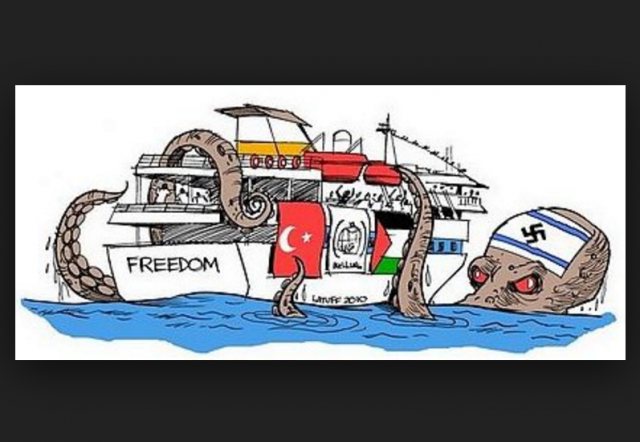
Last week I drove out to Rochester, NY to give a talk titled ‘Fighting the Hate: When Does Anti-Israel Become Anti-Semitic?’.
Sponsored by ROC4Israel, a new pro-Israel organization that we featured in a post back in October, my lecture centered on how legitimate criticism of Israel can be distinguished from criticism that crosses the line into anti-Semitic hate speech.
A video of my 60 minute lecture, which also captures its accompanying PowerPoint slide show, is now available on YouTube (full embed lower in post).
Below I highlight the main themes. I break the hour-long lecture into segments so that readers can click on to those parts of the talk that are of most interest.
I then summarize a series of post-lecture discussion exercises that I led with the nearly 100 audience members who attended my January 7, 2016 event.
1. Introduction
Despite some major setbacks, like the crushing defeat of an anti-Israel resolution at the recent professional meeting of the American Historical Association, the anti-Israel boycott, divestment and sanctions movement, or BDS, continues to gain ground.
As we’ve noted in hundreds of LI posts over the last few years, vehemently anti-Israel BDS activists, who are committed to delegitimizing Israel, have been working overtime to embed themselves within America’s college campuses and in our country’s mainline churches.
A recent report shows that programming aimed at vilifying Israel is even beginning to make some headway into the curricula of America’s Jewish day schools.
My video, its accompanying slide show, and the post-lecture discussion materials offer a new teaching tool to combat the BDS anti-Israel movement.
In them, I suggest how to facilitate a robust and constructive conversation relating to Israel—one that stands for the rights of both Jews and Arabs, and enables students and community members to better understand the complexity of both the Middle East in general, and the Israeli-Palestinian conflict in particular.
My lecture focuses on how Israeli government policy and practices can be criticized without resorting to anti-Semitism and the sorts of vicious anti-Jewish tropes that have sustained Jew-hatred across the millennia.
I show how anti-Semitism is neither a moving target nor in the eye of the beholder—it has a precise definition and specific manifestations. As noted by British writer David Baddiel, anti-Semitism is a unique type of racism. Jews are the only people on the planet for which racism has both a low and a high status: Jews are depicted as vermin and child killers who lust for blood; but they’re also centrally important and the purveyors of all evils, wealthy, and secretly in control.
Simply put: criticism of Israel crosses the line into anti-Semitism when the portrayal of the Israeli state and its society allows for them to emerge in ways similar to these classic stereotypes of the Jew.
Educators and community organizers who would like to use the documents and materials that accompany the video in their curricula or for a public community event can contact me for copies at [email protected].
2. Video Guide
0:00 to 4:26: Introductions
Tim Altier, Roc4Israel’s co-founder, offers some brief introductions.
4:27 to 12:14: Overview of anti-Semitism in Europe and the U.S.
I discuss the global resurgence of anti-Semitism, with a particular focus on Europe. Rising anti-Semitism in Western Europe is driving record-high Jewish immigration to Israel.
In the United States, I point out that while overall hate crime is on the decline, anti-Jewish ones still make up the bulk of religious-bias crimes in America.
In this part of the video, I also note the dramatic rise in anti-Semitism on America’s college and university campuses. I alert the audience to the fact that at schools where there are active BDS campaigns, we are also seeing Jewish students being physically and verbally assaulted, vilified on social media, intimidated into silence, and discriminated against.
12:15 to 22:52: Defining anti-Semitism as it Relates to Israel
Drawing on the work of Ira Forman, the U.S. State Department’s special envoy to monitor and combat anti-Semitism, and Rabbi Lord Jonathan Sacks, Great Britain’s former chief rabbi, I define contemporary anti-Semitism as the denial to Jews as a distinctive people the right to self-government in the land of their origins.
What’s central to this “new anti-Semitism” is that instead of being hated for their religion or for their race, as they were for millennia, today Jews are vilified for their nation state.
In this part of the talk, I also point out how today’s assault on Jews is increasingly couched in the language of human rights. Israel—the homeland of the Jews—stands accused of cardinal sins against human justice, including apartheid, ethnic cleansing, and attempted genocide.
It’s a systematic falsification. The accusations are tendentious, disproportionate, and often made in bad faith.
Still, even the most intemperate critical statements of Israel’s government or its society are not necessarily anti-Semitic.
Critics of Israel who use the F-word incessantly to curse Israel are certainly poor writers. But as I argue in the lecture, they’re only anti-Semites if along with the profanity they also make a mendacious argument—employing falsehoods to delegitimize and demonize Israel, and to reject its right to exist.
Thus, criticism of Israel morphs into anti-Semitism not merely when it’s uncivil, but when it expresses an utter hostility to Jewish peoplehood or when it projects the negative stereotype of the Jew (e.g., sinister, clannish, disloyal, traitorous, rootless, parasitic, cunning, money-grubbing, and power-grabbing) onto the Jewish-majority state.
22:53 to 26:16: Manifestations of anti-Semitism: the Modern Day Version of the Blood Libel
In this section of the video I offer an overview of one of the most ubiquitous anti-Semitic canards: the claim that Israel’s leaders, aided and abetted by its citizen-army, are purposefully executing innocent men and women, and perpetrating acts of infanticide.
The Palestinian Authority has made use of this anti-Semitic blood libel in its anti-Israel propaganda.
As documented in several recent LI posts (see here and here), I also alert the audience to the so-called Jewish Voice for Peace’s frequent promotion of, and co-sponsorship with, notorious proponents of this blood libel, such as Alison Weir and her organization, If Americans Knew.
Judging by the many audible astonished gasps from the audience when presenting this part of my lecture, it was obvious that much of this information was not very well-known.
26:17 to 28:48: Manifestations of anti-Semitism: Parallel Images of Nazis and Israelis
In this part of the video, I present another prevalent manifestation of anti-Semitism today—the equation of Israel with the Nazi state.
I also briefly discuss the concept of Holocaust inversion.
With it, rather than denying that the Holocaust happened, rhetoric and imagery associated with the it is adopted to cast Israelis as the new Nazis—and Palestinians as the new Jews.
Today, there is an enormous amount of material circulating in print and social media with these memes.
28:48 to 30:21: The BDS Mission as an Assault on Jewish Identity
Here, I present the argument that anti-Zionism is anti-Semitism. That is, denying Israel’s right to exist as a Jewish homeland represents an anti-Semitic stance.
As I note in the talk, it’s a claim expressed by both the Pope and President Obama.
It’s also stated eloquently in a moving op-ed by Judea Pearl, Professor of Computer Science at UCLA and President of the Daniel Pearl Foundation:
As a Jew, I am one with my people through the bonds of common history. Israel, the culmination of that history, is the central symbol of our identity as a people. You will not be curtailing anyone’s right to free speech by recognizing ‘the denial of a Jewish homeland’ as an unacceptable topic for public discourse on campus, no less unacceptable than ‘the denial of human rights to Blacks, women, or Arabs’. Rather, you will be merely affirming the right of the Jewish people to a homeland—which is what Zionism is all about—no more, no less”.
30:22 to 35:04: The ‘Push Back’: Critiques by BDS Supporters
In this section of the video, I draw on the work of Judith Butler, one of the doyennes of the BDS anti-Israel movement, who has written and spoken ardently in its support.
In the talk, I present this quote from a rejoinder that Butler made to then President of Harvard University Lawrence Summers, a long-time critic of BDS:
The Jewish population of the world does not conceive of itself as one with the Israeli state… there is no “full and seamless identification of the Jewish people with the state of Israel…Israel is not what keeps the Jewish people alive and not all Jewish people have their sense of perpetuity invested in the state of Israel…The argument that all Jews have a heartfelt investment in the state of Israel is simply untrue…it will not do to equate Jews with Zionists or, indeed, Jewishness with Zionism”.
So basically BDS activists like Butler want to tell us what our Judaism is all about.
As I mentioned in the lecture, no one would dream of telling Christians that their religion has nothing to do with Jesus. Yet BDS advocates think it’s perfectly fine to tell Jews that their religion (Judaism) really has nothing to do with being part of a nation (Zion).
As Evelyn Gordon quips in a recent op-ed with a great title (“Denying Jews the Right to Define Judaism is Anti-Semitism”), “neither the Bible nor 4,000 years of Jewish tradition recognizes any such divide”.
35:05 to 40:00: To Be Pro-Israel, You Need to Do Stuff That Is Pro-Israel
In this segment of the video I suggest that while there’s plenty of room in the pro-Israel movement for “anti-occupation progressives”, organizations on the left actually have to speak out and act on behalf of Israel to earn a pro-Israel designation.
Here I draw on the work of Joshua Muravchik, a fellow at Johns Hopkins University’s School of Advanced International Studies. I had the pleasure of meeting him and talking about this issue in Washington DC last month.
In his masterful new book, Muravchik meticulously documents how the self-identified group J Street is in fact nothing of the sort because “all its work seems to be in the opposite direction”.
J Street’s activism on both the campus and in the community (see, for example, the posts by blogger Elder of Zion here and here) suggest that while it once might have been a left-of-center pro-Zionist/pro-peace organization, today it has strayed far from this original mission.
In Rochester, I invited the audience—many of whom I was told were devoted J Street fans—to research this issue further, and to raise their concerns.
40:01 to 45:18: Origins and Critiques of the BDS Movement
In this section of my lecture, I note that while BDS activists often describe themselves as peace activists, they in fact spurn cooperation with the Israeli peace movement and condone and even applaud violence against Jews.
This becomes understandable only by acknowledging that the call for boycotting Israel, as we noted in a recent LI post, originated at the notorious anti-Semitic United Nations conference held in Durban in 2001, just days before 9/11—a meeting so full of Jew-hatred that the U.S. delegation walked out.
The BDS mission statement hasn’t wavered since then and still calls for the dismantlement of the Jewish state.
Basically, as suggested by the BDS leadership on numerous occasions, the movement wants to sanction Israeli companies and universities until Israel agrees to implode.
In the remainder of this section of the video, I review the central criticisms of BDS: its targeting of only Israel for censure; its astonishingly condescending and patronizing stance toward Arabs; and the fact that it hasn’t delivered a single tangible benefit for Palestinians, the people that it claims to care so much about.
45:19 to 50:53: Intersectionality: BDS in America’s Churches and Colleges
In this section of the video, I briefly note the inroads that BDS has made in America’s progressive churches, a topic that I have written about in a recent LI post.
I then move to discussing BDS activism on the American campus.
Worth noting is the extraordinary lack of data contained within the pro-BDS petitions currently circulating professional academic organizations, such as the one up for review currently at the American Anthropological Association (AAA).
What evidence there is in these documents is typically unsourced, or the citations reference highly dubious outlets. In the lecture, I highlight some of the many erroneous claims in the AAA document which is now up for membership vote.
I also offer an example closer to home: a petition now circulating at the City University of NY (CUNY) which calls for the university to divest from the private prison system, but bizarrely tacks on at the end this clause:
we also demand divestment from Israeli companies as well as divestment from organizations that fund the existence of apartheid Israel”.
No other country. Just Israel.
It’s something we’re seeing a lot on campuses these days—the attempt to hijack other unrelated causes, often very worthy ones, by interjecting anti-Israel messaging.
It’s called ‘intersectionality’.
Basically it’s the insane idea that if you’re opposed to homophobia, or concerned about fossil fuels, or worried about sexual violence, or upset about what happened in Ferguson—then you must also view Israel as an oppressive, racist, colonial, apartheid state.
50:54 to 56: 16: The Campus ‘Double Standard’
Today, in campus environments where even the slightest “micro-aggression” that offends any minority group is immediately deplored, the toleration of both micro and macro aggressions visited upon Jewish students, faculty, and staff often goes unnoticed.
I discuss this troubling double standard at the end of my talk.
What it means is that vehemently anti-Israel faculty who often cross the line from legitimate criticism of Israel into blatant anti-Semitism are able to work unimpeded and unhindered (and may even be feted and given awards at professional conferences).
At the same time, pro-Israel academics who take a stand against anti-Israel bias (or who may write one or two intemperate FaceBook posts about Hamas and Palestinian violence against Israelis) are raked over the coals, vilified as racists by students, faculty and administrators alike, and hounded to such an extent that they have to either sue or take a leave of absence.
My audience last week probably thought I was kidding. But it’s no joke.
I invited them to investigate what recently happened to Connecticut College Professor Andrew Pessin.
56:17 to 58:45: Conclusions
To conclude my lecture, I reminded the audience that in the U.S., no matter how much we don’t like it, hate speech is free speech. The obligation of government, and university faculty and administrators too, is not to censor even the most controversial speech.
But no one is morally obligated to sit silently when Jewish identity is disrespected and negatively labeled.
In this portion of the video, I note that—just like with any country—there are legitimate criticisms of Israeli policies, and innumerable legitimate ways that those criticisms can be aired. But the wholesale boycott of Israel’s entire system of higher education isn’t one of them.
Simply put, a university cannot accept any moral legitimacy of a boycott of Israel, or equivocate in denouncing it.
My final point is this: while BDS masquerades as a human rights movement, and has managed to convince many people motivated by genuine humanitarian concerns, it is essentially a “domestic form of anti-Semitism”.
As noted recently in an important op-ed by Ben Cohen in JNS, Israel is the ostensible target of the BDS movement, but first in the firing line are diaspora Jews:
[BDS] attacks local Jews through the demonizing of the Jewish state…Quarantining Israel in order to eliminate it may be the stated goal of BDS, but its immediate and often only impact is upon those Jews in the vicinity of the movement’s propaganda activities”.
3. Post-lecture Discussion Exercises
Along with screening the video, educators and community organizers may wish to use the following activities and exercises to generate small group discussions.
Completing all 4 exercises takes approximately 90 minutes. Ideally, the responses generated from these exercises can be used for future programming.
I am told by the Board of Roc4Israel that they found the responses so diverse and thoughtful that they plan to use the findings as a guide for further community events.
- Screening the Trailer for the 2014 Documentary “Hate” (20 minutes)
Following my lecture last week, I invited the Rochester, NY audience to view a four-minute trailer for “Hate”, a new documentary by Israeli filmmaker Nadav Eyal.
In the film, Eyal traverses Europe, interviewing Jews, Christians and Muslims. The film portrays the perpetrators of classical, white supremacist racism. But there’s also a far left-wing anti-Semitism that gets depicted—it’s more complex, as it has quite a few Jews represented within it.
The film shows the dilemma facing Jews in Europe, and also—in a somewhat more muted form—Jews in America, where they confront a growing mélange of the extreme left-wing, radical Islam, and old fashioned white racism.
Screening the film’s trailer enables viewers to move from my video “Fighting the Hate” to a small-group discussion of the lecture’s themes. The few minutes can also be used to pass around the handouts for the breakout discussions.
- Breakout Discussion #1 (30 minutes)
In the post-lecture workshop, audience members broke up into pairs to discuss 25 images from print and social media. The colored images were distributed as handouts.
Each paired team was asked to determine whether all or only some of the images crossed the line from legitimate criticism of Israel into anti-Semitic hate speech.
Responses were recorded on separate pages for collection at the end of the event (note: self-identification optional).
Here are some of the images from the packet:
- Breakout Discussion #2 (20 minutes)
In this post-lecture workshop, audience members worked in small groups to consider the U.S. State Department’s document defining anti-Semitism.
Participants were invited to record their answers to the following question: do you agree that the University of California regents should adopt this definition of anti-Semitism in their system-wide documents regarding hate speech?
The responses were collected at the end of the event (note: self-identification optional).
- Breakout Discussion #3 (30 minutes)
In this post-lecture workshop, audience members were invited to consider the actions, if any, that the U.S. government and the American Jewish community should take to address anti-Semitism as it relates to Israel, as well as the BDS campaign. Participants were asked to record their answers to the following questions:
Should U.S. state legislatures and/or the federal government pass bills opposing BDS? What responses should national Jewish organization take, and what might local Jewish communities do? What actions, if any, will you personally take?
The responses were collected at the end of the event (note: self-identification optional).
4. VIDEO Acknowledgements
I thank the Board and co-founders of Roc4Israel, Patti Munter and Tim Altier, for funding my visit to Rochester, NY on January 7, 2016, and for providing the financial support to produce the video featured in this post.
Roc4Israel, a recently formed pro-Israel independent, multi-religious group, invites the participation of Jewish and non-Jewish individuals in the greater Rochester area. Spanning the political spectrum from conservative to progressive, its growing membership pledges to “support the State of Israel in its quest for peace and security as the homeland of the Jewish people”.
The organization has my deepest admiration for all its many efforts to raise local awareness about the anti-Israel BDS movement, expose the rising tide of global anti-Semitism, and maintain a fair and balanced discourse on Israel and the Middle East, free from bigotry and hate.
May you go from strength to strength.
I also wish to thank here the Harley School for graciously opening their doors for the January 7 event, for hosting a large audience of over 100 in the school’s auditorium, and for permitting us to use their production equipment.
My appreciation too goes to sign language professionals Matt Salerno and Vance Deatherage, who expertly signed my entire talk and facilitated the participation of the hearing-impaired in the post-lecture discussion exercises.
I also thank Max Bednarcyk, a student at the Harley School, for donating so much of his time, for providing technical support during the event, and for producing a quality video for distribution.
Last but not least, I thank the community of Rochester, NY for the opportunity to speak, for the lively and passionate discussions that followed my lecture, and for extending such a warm and friendly central-NY welcome.
5. Conclusion – Organize Against the Hate
Led by Mark Yudof, president emeritus of the University of California system, and Kenneth Waltzer, former director of Jewish Studies at Michigan State University, a just-launched initiative, the Academic Engagement Network, aims to fight BDS on campus by developing a network of faculty and administrators who hail from “different traditions” but who all stand opposed to the BDS movement’s demonization of Israel.
It’s a great concept, because most groups that have organized these campus efforts in the past have tended to focus primarily on students.
That’s a good place to start.
But students are transient, and it’s faculty and administrators who ultimately set the tone for the campus.
Waltzer and Yudof say that they’re not planning on just becoming another “faculty listserv…Those who sign on are expected to write, speak, and intervene”.
You can call this post my first contribution to the cause.
Miriam F. Elman is an associate professor of political science at the Maxwell School of Citizenship & Public Affairs, Syracuse University. She is the editor of five books and the author of over 60 journal articles, book chapters, and government reports on topics related to international and national security, religion and politics in the Middle East, and the Israeli-Palestinian conflict. Recently, she was invited to join the Academic Engagement Network (AEN), a new initiative that aims to bring U.S. academics together to facilitate a “constructive dialogue around Israel”. For more on the AEN and Elman’s statements on its behalf see here.
Donations tax deductible
to the full extent allowed by law.


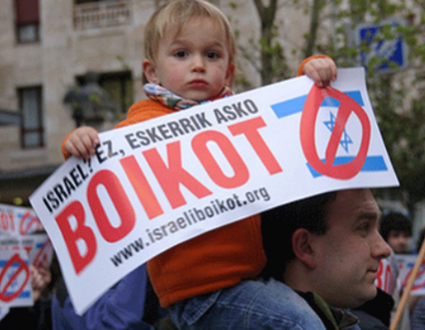

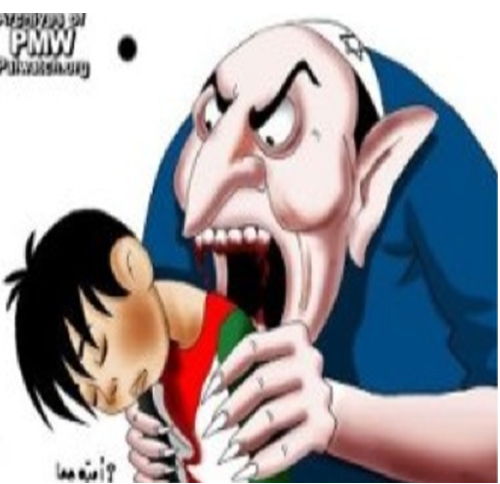

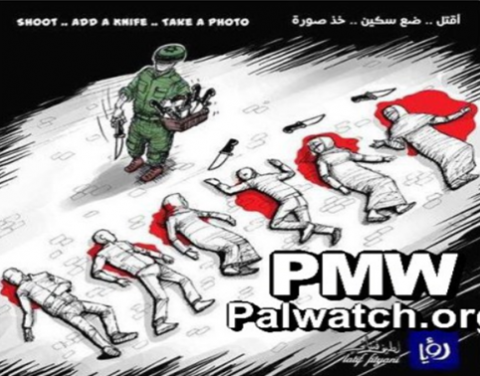
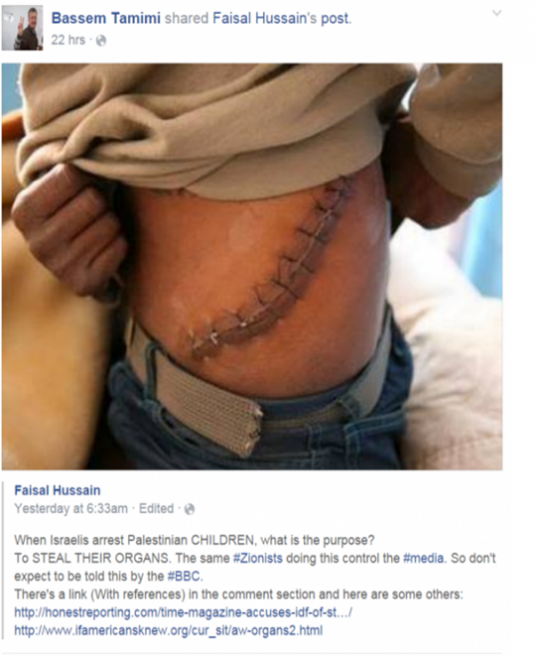

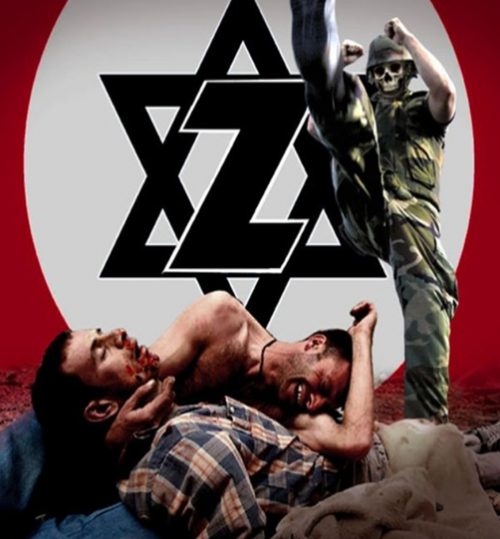
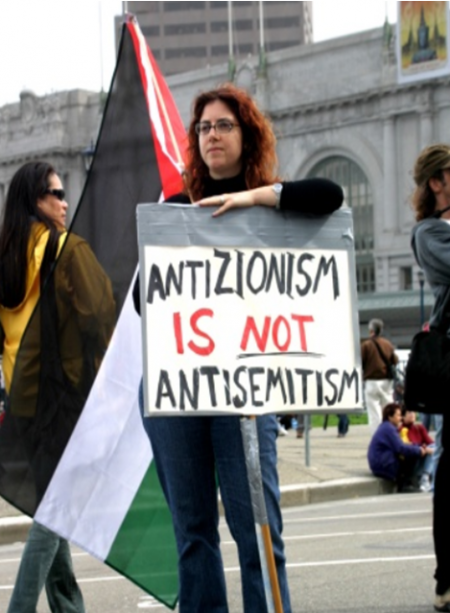
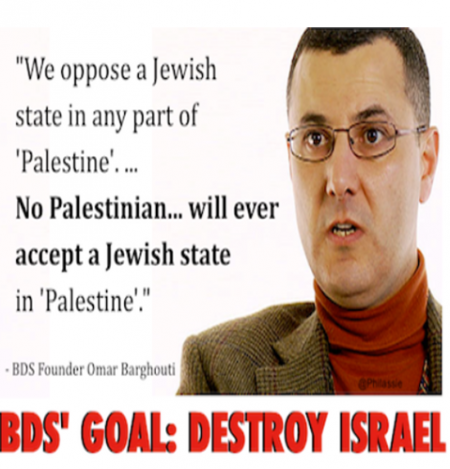
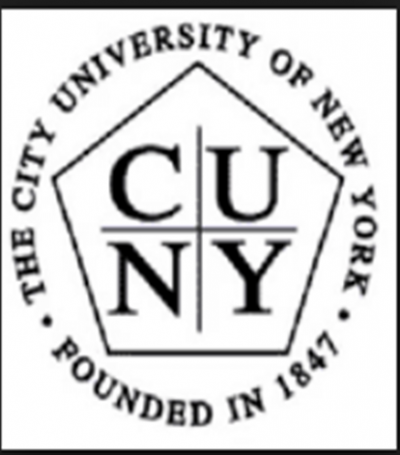
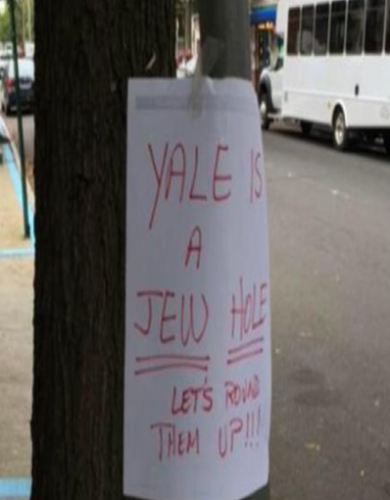
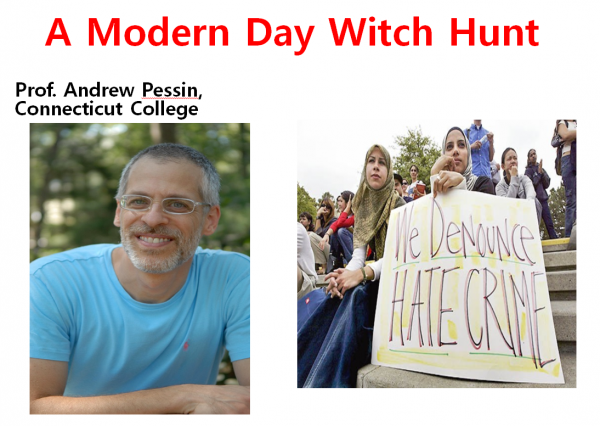

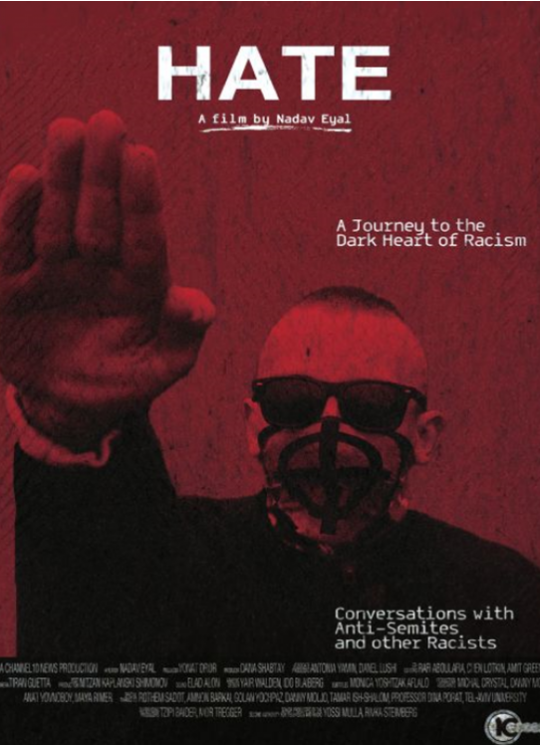
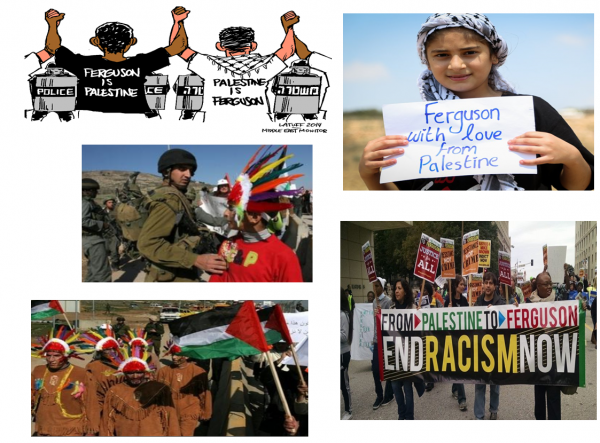
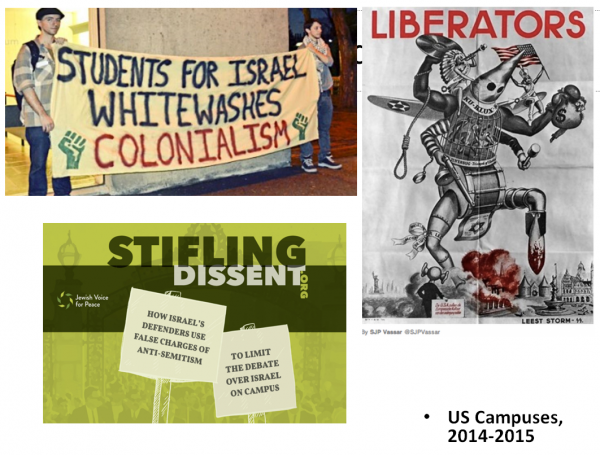

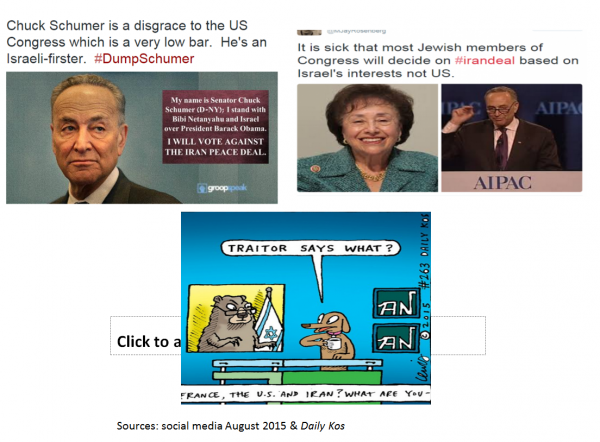
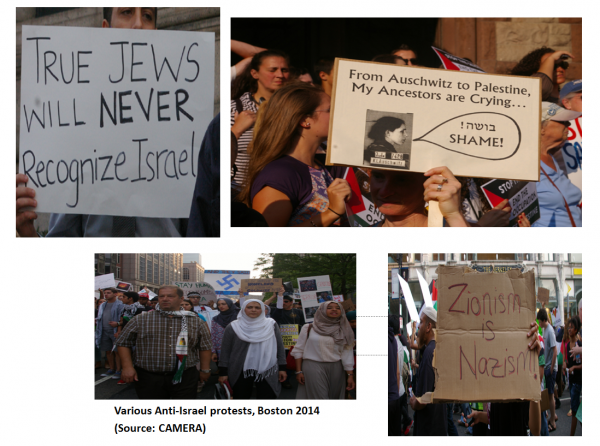
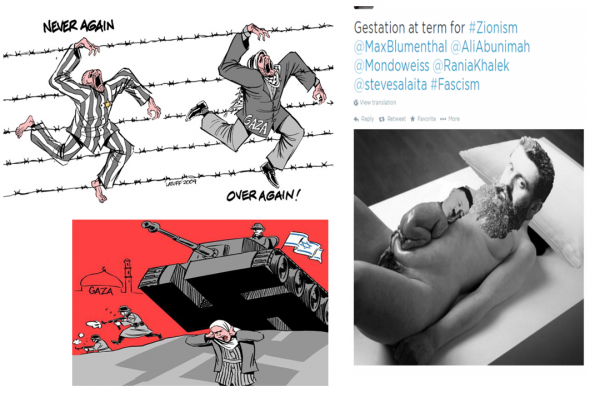
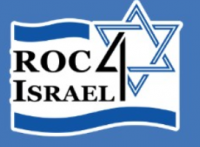
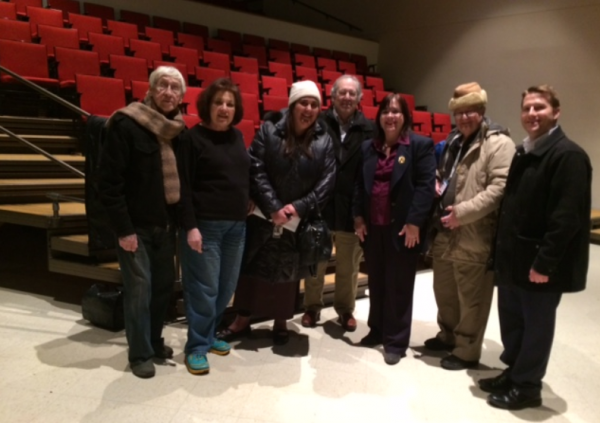








Comments
“Fighting the hate: When does anti-Israel become anti-Semitic?”
Anti-Israel is simply hatred toward the nation Israel and anti-Semitism is hatred toward the Jewish people, thus they are one and the same.
But real the question is, where does this hatred come from? It comes from the devil. Yes, but why does he hate the Jews?
1. First, it is a reflection of his hatred for God.
2. Second, the Jews are God’s chosen people!
3. And finally, by hurting them he seeks to hurt God and take revenge for his own death sentence.
What this means is that hatred for Israel and for the Jewish people is ultimately a spiritual phenomenon rather than a cultural, ethnic or political phenomenon.
I haven’t read this entire article because it’s too long. And from the pictures alone it’s just too damn depressing.
But I will point out that there are a few rays of hope, even from the far Left: http://trotskyschildren.blogspot.com/2015/02/the-swp-defends-civilization.html
DanKing: Thanks for your comment and the link.
The length of this piece is deliberate. As an accompanying document to the video, it’s meant to serve as a primer to the BDS movement’s ongoing assault on Israel’s legitimacy.
Not everyone can watch the 60 minute YouTube film, so this post summarizes.
For a comprehensive (46 pages, with 167 single spaced footnotes!) overview of the BDS movement’s origins, goals, and its political and economic warfare campaign against Israel, see this recently released JCPA document: http://jcpa.org/unmasking-bds/
I’m not Jewish so I’m no expert on this matter, but my quick rule of thumb is anyone likening Israel’s actions and policies to the Nazi’s, or talking of Israeli “genocide” or “apartheid” is not to be taken seriously … ever again.
The Israel-hate derangement syndrome is a big tool in the radical left’s arsenal of hatred and violence, no less than it was re Jews in Adolph Hitler’s.
Most disgusting is how America’s ‘fashionable left’ – actors like like Penelope Cruz and George Clooney’s wife, and singers like Rianha, Elvis Costello, Roger Waters, Alisa Keyes, among many others, who hop on this hate train like it’s party.
The absurdity of the lie and the reality of existential danger Israel faces day to day make all the puppets so ignorantly supporting this particularly ignorant, if not vile. The people pushing it are simply evil. Their hypocrisy, of course, is equally vile: they’re too cowardly, of course, to criticize radical Islam, but also think of the American left’s reaction to criticism – rightfully or not – of American blacks or Hispanics.
The whole thing is simply another wave of hate engineered by fascist leftists for ignorant useful idiots to ride.
http://www.ibtimes.co.uk/hollywood-studios-blacklist-penelope-cruz-over-gaza-letter-accusing-israel-genocide-1460455
http://www.independent.co.uk/news/people/rihanna-tweets-freepalestine-support-deletes-it-posts-something-far-less-controversial-about-the-9608782.html
http://forward.com/culture/180206/alicia-keys-and-a-brief-history-of-the-israel-boyc/
http://www.theguardian.com/music/2010/may/18/elvis-costello-cancels-israel-concerts